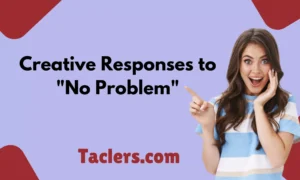Anger is a natural and valid emotion, but managing it constructively is crucial for maintaining personal well-being and healthy relationships.
Here are 21 effective strategies to handle anger positively and transform it into a force for personal growth and resolution.
1. Practice Deep Breathing
Explanation:
Deep breathing helps calm your nervous system and reduce the intensity of your anger.
Example:
Person A: I’m so angry right now.
Person B: Try deep breathing. Inhale deeply through your nose, hold for a few seconds, and exhale slowly.
By saying “deep breathing,” you offer a method to regain control and calm down.
2. Take a Timeout
Explanation:
Stepping away from the situation allows you to cool down and approach the problem with a clearer mind.
Example:
Person A: I’m about to lose my temper.
Person B: Take a timeout. Go for a walk or sit quietly for a few minutes.
By saying “take a timeout,” you encourage a temporary break to manage anger.
3. Practice Mindfulness
Explanation:
Mindfulness helps you stay grounded in the present moment, reducing the impact of anger.
Example:
Person A: I’m feeling overwhelmed by anger.
Person B: Try mindfulness. Focus on your breath and observe your thoughts without judgment.
By saying “practice mindfulness,” you promote a technique for emotional regulation.
4. Use Positive Self-Talk
Explanation:
Reframe negative thoughts into positive affirmations to shift your perspective and reduce anger.
Example:
Person A: I can’t believe this happened.
Person B: Use positive self-talk. Remind yourself that you can handle this situation calmly.
By saying “positive self-talk,” you help reframe anger into a more manageable response.
5. Engage in Physical Activity
Explanation:
Exercise releases endorphins, which can help reduce stress and improve your mood.
Example:
Person A: I’m so frustrated right now.
Person B: Go for a run or do some exercises. Physical activity can help alleviate anger.
By saying “engage in physical activity,” you suggest a healthy way to manage anger.
6. Write It Down
Explanation:
Journaling your feelings helps process and understand your anger better.
Example:
Person A: I’m too angry to think straight.
Person B: Try writing down your thoughts and feelings. It can help you gain perspective.
By saying “write it down,” you offer a method for emotional expression and clarity.
7. Use Humor
Explanation:
Finding humor in a situation can help defuse anger and shift your mindset.
Example:
Person A: This is so frustrating.
Person B: Try to see the funny side of it. Laughter can be a great way to ease tension.
By saying “use humor,” you encourage a lighter approach to managing anger.
8. Practice Gratitude
Explanation:
Focusing on what you’re grateful for can shift your attention away from anger and towards positivity.
Example:
Person A: I can’t believe this happened to me.
Person B: Practice gratitude. Think of three things you’re grateful for right now.
By saying “practice gratitude,” you help refocus attention to positive aspects of life.
9. Seek Solutions
Explanation:
Channel your anger into problem-solving to address the root cause of your frustration.
Example:
Person A: I’m really angry about this issue.
Person B: Let’s focus on finding a solution. What steps can we take to resolve this?
By saying “seek solutions,” you redirect anger into constructive action.
10. Communicate Assertively
Explanation:
Express your feelings clearly and respectfully to address issues without escalating conflict.
Example:
Person A: I’m upset about how this was handled.
Person B: Communicate assertively. Express your concerns calmly and clearly.
By saying “communicate assertively,” you promote healthy expression of feelings.
11. Practice Empathy
Explanation:
Understanding the perspective of others can help reduce anger and foster compassion.
Example:
Person A: I can’t believe they did that.
Person B: Try to practice empathy. Consider their viewpoint and why they might have acted that way.
By saying “practice empathy,” you encourage a more understanding approach to conflict.
12. Engage in Relaxation Techniques
Explanation:
Relaxation techniques, such as progressive muscle relaxation, help reduce physical tension caused by anger.
Example:
Person A: My anger is making me tense.
Person B: Use relaxation techniques. Try progressive muscle relaxation to ease physical tension.
By saying “engage in relaxation techniques,” you suggest methods to reduce stress.
13. Set Boundaries
Explanation:
Establishing clear boundaries can help prevent situations that trigger anger.
Example:
Person A: This situation is really getting to me.
Person B: Set boundaries. Identify what’s acceptable and communicate that clearly.
By saying “set boundaries,” you help prevent recurring issues that lead to anger.
14. Practice Forgiveness
Explanation:
Forgiveness can release you from the burden of anger and lead to emotional healing.
Example:
Person A: I’m holding onto a lot of resentment.
Person B: Practice forgiveness. Let go of grudges and focus on moving forward.
By saying “practice forgiveness,” you encourage letting go of anger for emotional well-being.
15. Seek Professional Help
Explanation:
A therapist or counselor can provide tools and strategies to manage anger effectively.
Example:
Person A: I’m struggling to control my anger.
Person B: Seek professional help. A counselor can provide guidance on managing anger.
By saying “seek professional help,” you suggest accessing additional support for anger management.
16. Engage in Creative Outlets
Explanation:
Creative activities, such as painting or playing music, can serve as an emotional release.
Example:
Person A: I need to do something with all this anger.
Person B: Engage in creative outlets. Art or music can be great ways to express and release your emotions.
By saying “engage in creative outlets,” you offer an alternative way to channel anger.
17. Practice Self-Care
Explanation:
Taking care of your physical and mental health can help manage anger and reduce stress.
Example:
Person A: I’m feeling overwhelmed.
Person B: Practice self-care. Ensure you’re getting enough sleep, eating well, and taking time for yourself.
By saying “practice self-care,” you highlight the importance of overall well-being.
18. Use Relaxing Techniques
Explanation:
Techniques such as meditation or yoga can help calm the mind and reduce anger.
Example:
Person A: My anger is really building up.
Person B: Use relaxing techniques. Meditation or yoga can help you stay calm.
By saying “use relaxing techniques,” you offer practical tools for anger management.
19. Set Realistic Expectations
Explanation:
Setting realistic expectations helps manage frustration and reduce feelings of anger.
Example:
Person A: I’m so frustrated with this project.
Person B: Set realistic expectations. Assess what’s achievable and adjust your goals accordingly.
By saying “set realistic expectations,” you encourage a practical approach to managing frustration.
20. Practice Active Listening
Explanation:
Active listening helps you understand others better and can prevent misunderstandings that lead to anger.
Example:
Person A: I’m annoyed with the way this was handled.
Person B: Practice active listening. Fully focus on understanding the other person’s point of view.
By saying “practice active listening,” you improve communication and reduce conflict.
21. Use Visualization Techniques
Explanation:
Visualizing a calming scene can help you manage anger and achieve emotional balance.
Example:
Person A: I’m struggling to stay calm.
Person B: Try visualization techniques. Picture yourself in a peaceful setting to calm your mind.
By saying “use visualization techniques,” you provide a method for emotional regulation.

Matthew Porter brings a vibrant energy to Taclers.com with his engaging and witty writing style. As a seasoned journalist, he has an eye for the unexpected and the extraordinary. His compelling narratives on reactions will keep you hooked from start to finish.










